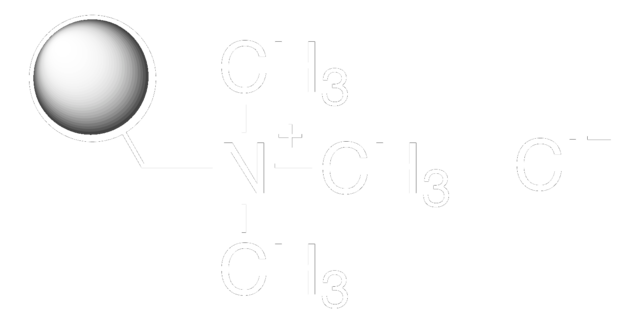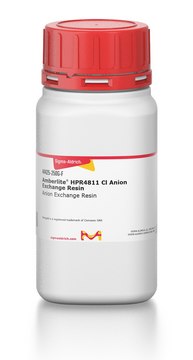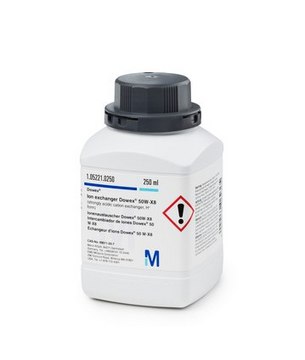436747
Amberjet® 4200 Ion Exchange Resin
chloride form, 20-30 mesh
Recommended Products
product name
Amberjet® 4200 chloride form, chloride form
form
beads
parameter
60 °C Cl- form max. temp.
technique(s)
LPLC: suitable
impurities
50%
matrix
styrene-divinylbenzene (gel)
matrix active group
quaternary ammonium functional group
particle size
600-800 μm
capacity
≥1.30 meq/mL by wetted bed volume
separation technique
anion exchange
SMILES string
[Cl-].C=Cc1ccccc1.C=Cc2ccc(C=C)cc2.C[N+](C)(C)c3ccc(C=C)cc3
Looking for similar products? Visit Product Comparison Guide
General description
Application
Legal Information
WGK
WGK 3
Flash Point(F)
Not applicable
Flash Point(C)
Not applicable
Certificates of Analysis (COA)
Search for Certificates of Analysis (COA) by entering the products Lot/Batch Number. Lot and Batch Numbers can be found on a product’s label following the words ‘Lot’ or ‘Batch’.
Already Own This Product?
Find documentation for the products that you have recently purchased in the Document Library.
Our team of scientists has experience in all areas of research including Life Science, Material Science, Chemical Synthesis, Chromatography, Analytical and many others.
Contact Technical Service



